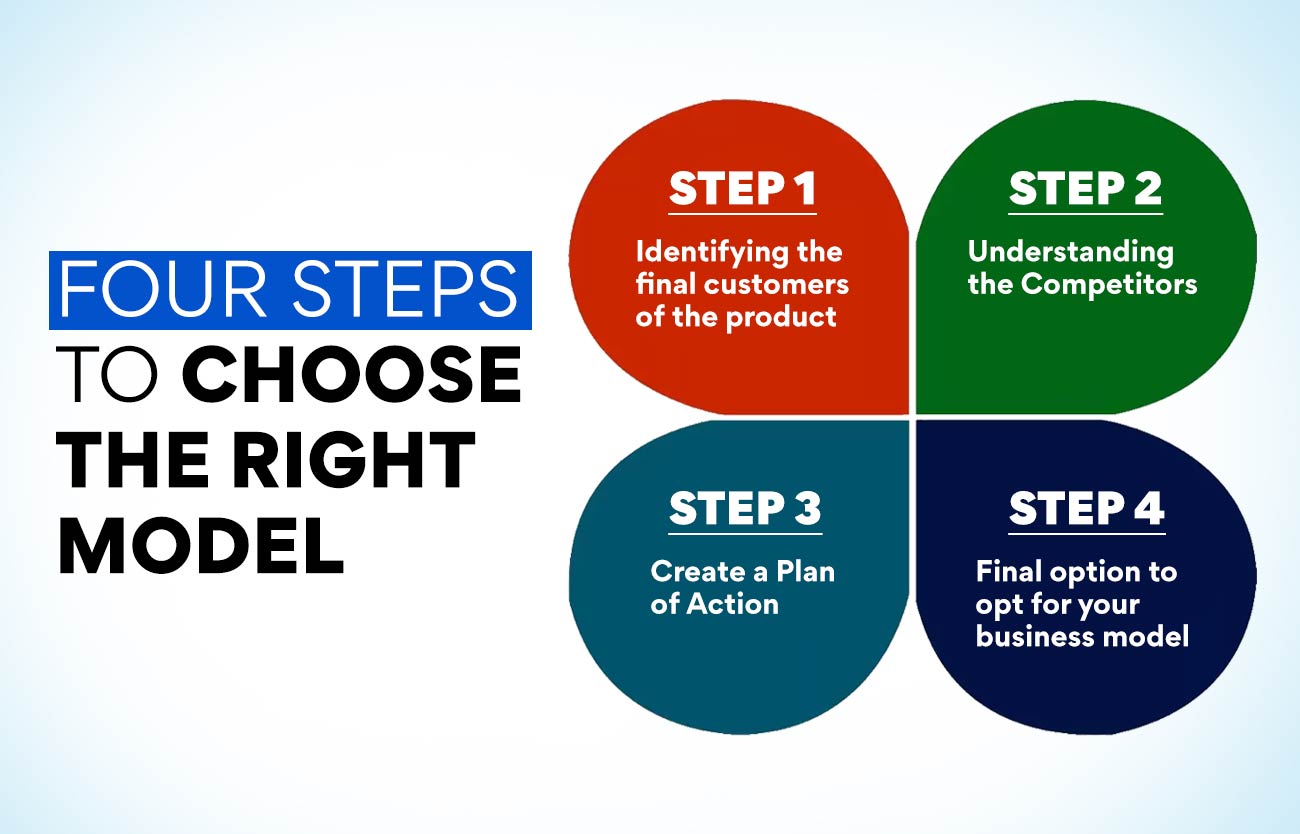What are startup business models?
The phrase “business model” describes a company’s strategy for turning a profit while still giving its clients value at a reasonable cost. The model shows the skills and materials needed to produce, sell, and distribute this value. Thanks to this very important “business model”, businesses can predict trends and problems.
A business model is significant for shaping the organisation’s external interactions, even when it could be more relevant to customers. Investors and employees may use it to learn about the companies they want to work with. Additionally, it enables entrepreneurs to model, test, and experiment with various cost and revenue stream structures. It provides a framework for creating financial predictions for existing organisations, establishing milestones, and providing a starting point for your business plan review. As a result, entrepreneurs must give the business strategy their full attention. If you’re starting, researching alternative startup business models will help you decide whether your idea is workable and direct your overall management approach.
Importance of having a model for your startup idea
The main element that makes startups successful is the business concept. It gives a business the foundation it needs to maximise earnings. A strong business plan is essential to getting investment from investors. It outlines the market, target audience, and value offer for the firm. According to the business model, interactions with solution partners, distribution channels, and consumers are primarily determined by synchronising internal and external operations.
Types of Startup Models
Entrepreneurs now employ numerous distinct business models. Every company is different; over time, most combine a few of these models. Entrepreneurs must make a careful choice with their blend because having more does not guarantee that they will make wiser decisions. The chosen strategies may provide significant success or cause their business to fail.
It is crucial to gain more knowledge about each startup business model type, including a brief overview, an explanation of how and why each model functions, its advantages and disadvantages, and examples from actual applications. Let’s learn about several well-known but effective startup business models that companies like Amazon, Uber, Airbnb, and others have used!
- Marketplace Model: This business model enables companies to act as middlemen for buyers and sellers, manage transactions, and provide services. This strategy has advantages, including quicker client base growth, less need to keep inventory, lower overhead expenses, and more. Amazon is one of the most well-known firms that had success with the marketplace business model.
- On-demand Model: In this business model, clients receive a service they may ask for and use whenever they want. One of the best examples of this business strategy is Uber. This model’s most prominent advantage is that it targets younger populations and uses freelance labour to save expenses.
- Disintermediation Model: Disintermediation is one of the most effective business strategies employed by wholesalers, producers, and companies with direct sales operations. It assists businesses in lowering intermediate expenses, making it the perfect alternative for new businesses. Apple is the most famous business model example you are undoubtedly familiar with.
- Subscription Model: This business model substitutes convenience for a one-time product by offering a service via a subscription. It aids firms in obtaining consistent and reliable financial flows. Netflix is the most common subscription service provider, with many repeat users.
- Freemium Model: One common method of revenue generation for subscription-based services is the “Freemium” concept. According to this business model, customers can obtain a company’s entry-level product for free and the complete version for a fee. It enables the business to reach a huge audience. One company that has used this concept effectively is Spotify.
- Virtual Good Model: Simply put, this model is a strategy that enables buyers to buy virtual items only available online (in-app purchases). It enables customers to have an improved experience with exclusive ownership. One business that employs this strategy is Facebook, now known as Meta.
- Reseller Model: In this business strategy, the company concentrates on marketing and selling goods made by other businesses or people. However, the person or business who listed the item must manage the delivery of the item. This strategy has become quite popular because of players like eBay. It assists companies in avoiding inventory issues and lowering sales expenses.
The most typical business models entrepreneurs utilise are those described above. Other startup business models include White Labeling, Hook & Bait, Reverse Action, Modernized Direct Sales, Pay-per-use, and leasing. There are many names still to add, though.
Also Read-Top 21 Effective Team Management Skills: Key To Become a Good Manager
How do business models work
A business model is a plan of action or a channel that consists of all the components that need to align to make the business profitable. These include activities like organisational planning and strategy and daily work processes of the business, to name a few. However, a large ratio of businesses still needs to be made aware of the workings of these startup business models. The answer to this query is given below –
- The model includes a brief description of the activities that work towards generating revenue in the business. The distribution channel serves as a medium to transfer the value proposition to the targeted customers. Moreover, the outcome of the value proposition is gained when the business’s marketing activities are beneficial in building long-term relationships with existing and new customers.
- The business model also includes cost composition, which supports revenue generation. Value can only be created in a business when the core skill and primary functions work together within an operational unit which produces standard outputs and has a healthy interaction with the inputs.
Choosing the correct model for your business
Today, the business world is growing aggressively at a fast pace; every day, a new business idea is being generated. However, only a handful seize to exist in the competitive environment. Among all the other reasons behind the familiarity or success of a business – there is an important component called a business model. Having a business model to suit the requirements of the business is essential and a major key towards the success of any business activity. A business model should be strategic and structured in and around the business needs and goals. A business model, if defined properly, can streamline all the day-to-day activities seamlessly and allow a clear picture of the achievements and the set objectives. However, startup business models are difficult to understand and choose from. Before one chooses a suitable business model strategy for their startup – some of the questions one must ask about their business are –
- Who are the target group of customers?
- How can I differentiate my business from the other competitors in the market?
- What kind of value is the business providing its customers?
- What is the core idea or thought behind the business
Four steps to choose the right model
Now that we know the prerequisite questions to ask before choosing the correct business model, it is time to understand the process of choosing the right model for your organisation. Any business model should be able to reflect four components – the customers, the problems it is going to solve, put together all the elements of the business and finally, opt for the best model that your business can benefit from. The four steps are briefly discussed below –

STEP 1: Identifying the final customers of the product
Every business has a specific target group of customers defined before entering the market. The reason is simple – every business may have a unique reason or problem it is trying to amend. We have listed businesses in terms of the type of customer targeted –
- B2C Model Business – Here, the product or the service is created for the individual customers. The products cater to the day-to-day lives of the target group, like FMCG companies.
- B2B Model Business – Here, the products are created for the companies who further process them to make an end product for the individual buyers. For example, software service companies give their services to organisations worldwide.
- C2C Model Business -This model works as a platform where the seller meets a potential buyer. The business has to give equal service to the seller and buyer. Some of the best examples of this model are OLX – where buyers can find potential sellers to buy and sell products. It is a new-generation model known as the sharing economy model.
STEP 2: Understanding the Competitors
The world today is competitive, and knowing what others are doing is significant. To become the best, know the best – see what they are selling, how they are selling and to whom. This can be put into three questions –
- Who is their target customer set?
- Which type of monetising model are they using?
- What is the unique proposition of their business?
STEP 3: Create a Plan of Action
A business consists of nine blocks, each catering to a different business environment needs. Organisations need to understand the need and support behind a scheduled action plan. In business language, it is known as a Business Canvas.
- The problem of the business
- Customer Segment
- Understanding Value Proposition
- Channels of Communication
- Revenue Streams
- Key resources
- Key Action steps
- Key Partners
STEP 4: Final option to opt for your business model
It is now time to choose a business model based on the need. This depends on all the factors mentioned above. Once you have decided on the target group of customers, the kind of competitors in the market, and how they are successful, create your plan of action on the canvas.
Also Read: Different Types of Change Management: A Complete Guide
Trusted Courses to learn “Building a Startup.”
Several courses are available if you’re interested in creating a business or learning more about one for your future entrepreneurial adventure. These classes instruct you using case studies of startups making good money and are currently expanding to reach the next level. One such reputed course by a trusted Indian B-School, IIM Raipur, is the Executive Post-Graduate Programm in HRM.
It is a two-year master’s degree programme that combines live online classes with on-campus, in-person instruction. The course aims to provide HR professionals and startup owners looking to build skills relevant to today’s business demands with a thorough and up-to-date education on human resource competencies. This course is taught with the help of 3 specific modules that can make you future challenges ready:-
- Module 1: This module takes you through the ‘Introduction’ of a startup, followed by how to ‘be an entrepreneur’. Here, one can also learn the art of ‘Generating a Great Idea’ and ‘Design Thinking’.
- Module 2: This session walks you through the “Proof of Concept” for startups before teaching you the art of “Elevator Pitching”. The skills of “Marketing & Business Planning Putting” and “Starting Your Business – Lean Canvas” may also be learned here.
- Module 3: After giving you a brief on “Legal Considerations” to startups, this lesson teaches you how to “Create a Pitch Deck”. You may also learn “Putting a Team Together” and “Working in a Team” here. And finally, as an entrepreneur, one will also excel in the “Leading a Team” and “Entrepreneurship Game” after completing this course.
The best incentive of this course is 100% eligibility for funding for founders who have completed the course and submitted their startup concept to India Accelerator. One of the biggest startup accelerators in the nation, India Accelerator, will offer “Fast track” funding to startups with potential.
The Bottom Line
Some corporate strategies stand the test of time better than others, which disappear within a few years. However, a successful mix of factors, such as scalability, repeatability, predictability, and profitability, might increase the likelihood of entrepreneurship.
Overall, there isn’t a perfect business model; rather, the one that works best for a company is the one that the market and consumers need. Many firms alter their models over time and improve their strategies. With the right mentors, though, you can make your entrepreneurial path rewarding. What are you waiting for? Enrol yourself in the EPGP in HRM course today!
More Information:
10 Organisational Behaviour Challenges That Are Making Your Business Critical!
What Is The Meaning Of Strategic Direction In HR?




























